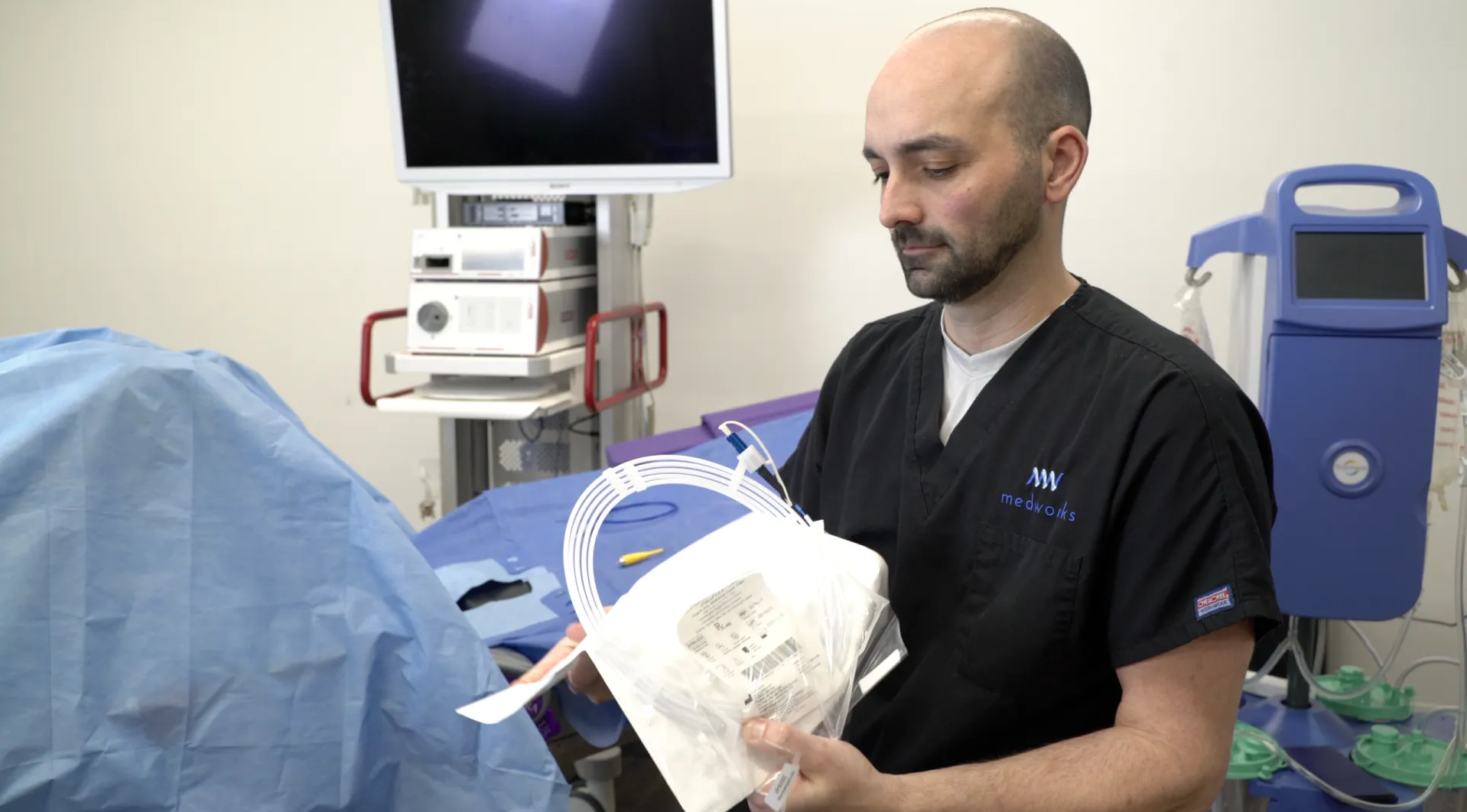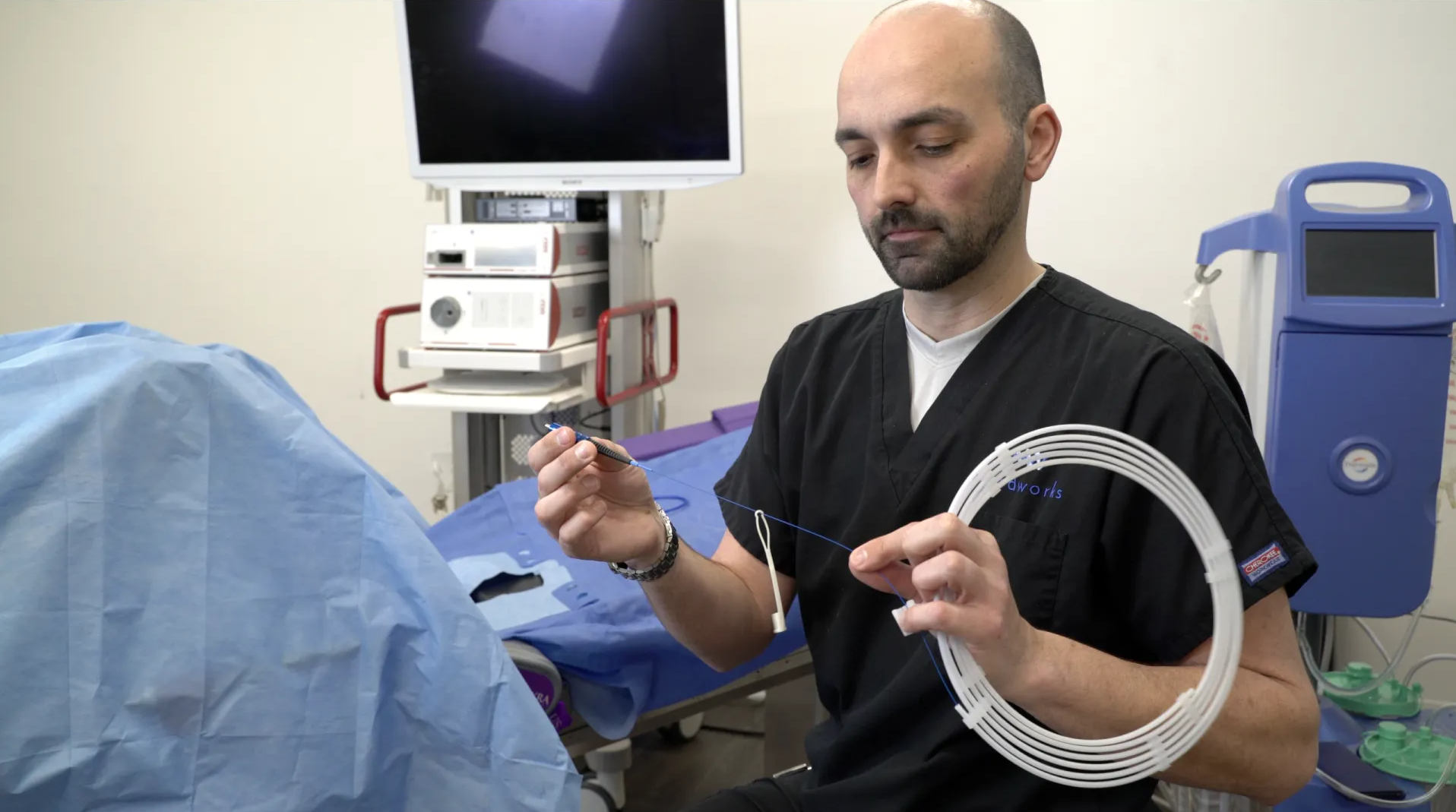Pros and Cons - Reusable vs Disposable Laser Fibers
Laser fibers are the delivery system for transmitting laser energy to a surgical site. For this article, we will discuss the differences between disposable and reusable fibers as well as the cost factors that separate the two.
Let's begin by answering some common questions:
What is the main difference between disposable and reusable fibers?
While variables occur in the quality of materials used in construction, these fiber types are essentially identical in structure. According to Medworks' Corporate Trainer, Jason Holley, the main difference lies in the addition of a chip imbedded in reusable fibers which recognizes the number of times the fiber has been connected to a laser, counting its uses. This is noted on the laser readout as use 3 of 10, 4 of 10, etc. Multiple use fibers are programmed for 5 to 10 uses. The chip in single use fibers only allows for one use. Some older model laser fibers did not have that capability built into them and essentially could be used an infinite number of times. The American National Standards Institute (ANSI) has established that after 10 uses, a laser fiber should be discarded.
What are the differences between the cost of these two types of fibers?
The cost differential between reusable and disposable fibers, all things being equal on construction and materials, is this: the fiber programed for multiple uses will be two to four times more expensive than the single use fiber. If the disposable fiber costs $350, there's a chance that a comparable multi-use fiber could cost around $1000.
Using these figures, a reusable fiber that may be used up to 10 times, results in the cost per procedure being $100, versus $350 for the same fiber programmed for single use. Up front, the cost is significantly higher for multi-use, but over time, the per-case cost decreases. However, once you factor in reprocessing and add the potential for scope damage, those reusables can sometimes fall well short of their initial value.
What is involved in the handling of reusable fibers that can negatively affect their value?
Multi-use fibers require sterilization between uses. While some facilities re-sterilize their own fibers, it is important to note that this requires fibers to be out of circulation during sterilization, recleaving, and reprocessing. Initially, it may appear that the facility is saving money per case considering the fiber's purchase price and its potential for multiple uses, but there is a wait time before that fiber can be used for another procedure, potentially diminishing its value.
What are other factors creating hidden costs that may not be calculated into the per case cost?
A reusable fiber is only as good as the care given to it during and after the case, as well as during reprocessing and repackaging. If at any point the fiber is coiled too tightly, micro fractures can develop within the core of the fiber causing laser energy scatter. For example, as energy is trying to pass through the fiber, it starts to reflect and bounce. With the presence of micro fractures, energy leaks can occur along the way resulting in less energy being delivered at the tip of the fiber. Furthermore, if leakage through the cladding occurs while the fiber is inside a flexible ureteroscope, there is potential for that energy to burn the working channel, or possibly damage actual components of the scope. The damage could result in expensive scope repairs or even scope replacement.
Damage can also happen in the OR. If during a procedure a single-use fiber is accidently damaged, the facility's loss is approximately $350 for that fiber, but the procedure can continue by opening a new fiber. Comparatively, if a multi-use fiber is damaged during its first use, there is a potential loss of $1000. In short, there are many points of vulnerability that exist between the OR and processing which can expose a multi-use fiber to potential damage, creating hidden costs.
What about fiber exclusivity?
The chip not only reads and counts the fiber uses, but also reads the branding. This makes fibers exclusive even though they are essentially constructed the same. To clarify, lasers are not going to require exclusivity in regard to single-use vs multi-use, but rather, because of their branding. The read-out will say invalid fiber because the communication disables the off brand fiber. If the laser were an open system, and the machine had not been locked down by the manufacturer, the (other brand) fiber would work normally. In recent time, manufacturers are more commonly closing their systems so that they will only work with an approved fiber that is generally produced or distributed by that manufacturer.

Let's break it down into Pros & Cons:
Reusable Fibers – Pros
- While being more expensive up front, there is the potential for substantial savings, bringing costs down over time.
Reusable Fibers – Cons
- There is a risk of damage to a flexible scope resulting in expensive repair and/or replacement costs. Processing, while required, does increase the likelihood of those expenses.
- Reprocessing time and associated central sterile costs present variable cost factors.
- Risk of not getting all its uses.
- Central Sterile must keep proper accounting/inventory of the fiber, making sure the fiber gets back to the OR and doesn't get lost.
- To track timely reorders, inventory requires additional monitoring regarding how many times the fiber has been used, a step that can easily be overlooked.
Disposable Fibers – Pros
- As soon as energy passes through a laser fiber, it is never going to be new again. A fresh fiber every time is a good reason to choose single-use.
- Easier to manage inventory. Fewer steps saves the facility time.
- Safer on equipment when utilizing single-use versus multi-use.
- Greater efficiency because no reprocessing is needed.
- The item(s) can be specifically billed to a patient’s insurance which results in a facility reimbursement and therefore a financial incentive for utilizing disposable fibers.
- Generally, the consensus is that single use is the better choice. Majority of facilities now use disposables fibers.
- Minimal risk of cross contamination between surgeries.
Disposable Fibers – Cons
- The recurring cost of the fiber.
Research substantiates that single-use laser fibers are ultimately more cost effective. Cited on the website, PubMed.gov, a comparative study published in the May 2014 issue of Urology on the topic of single-use laser fiber cost analysis drew this conclusion,
"On the basis of our data, it is more cost-effective to use a disposable laser fiber, as it prevents scope damage, which can happen because of microfractures with repeated laser use. Moreover, this will also save time and/or resource required with sterilization."
For our last question, let's discuss, "Who makes the final purchase decision?"
Generally, the decision on what type of fiber is purchased comes from Materials Management. Oftentimes, a purchasing department will do an analysis of costs trying to achieve a more budget friendly outcome. Therefore, a tight budget may be a factor in choosing multi-use fibers for the potential of per case and long term savings. It remains, however, that there is no guarantee that all of the fiber's uses will be realized.
Medworks thanks Jason Holley for his contribution to this article.
References
- Chapman RA, Somani BK, Robertson A, Healy S, Kata SG. Decreasing cost of flexible ureterorenoscopy: single-use laser fiber cost analysis. Urology. 2014 May;83(5):1003-5. doi: 10.1016/j.urology.2013.12.019. Epub 2014 Feb 12. PMID: 24529588.

